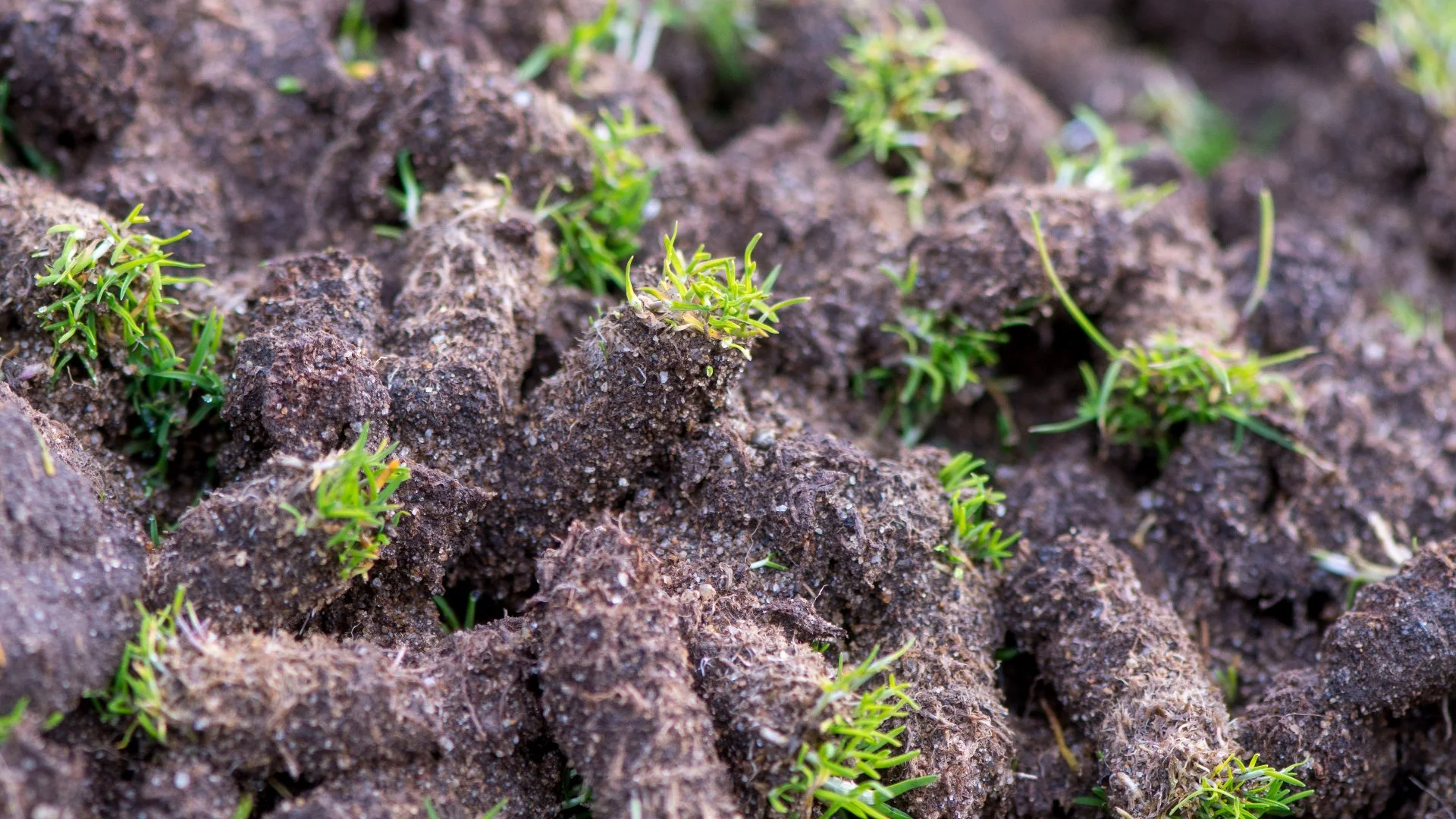Aeration is a popular lawn care service that should be performed annually in Pennsylvania. It involves pulling up cores of soil from your lawn to loosen compaction and make it easier for nutrients and other resources like water, sunlight, and air to reach the roots of your grass. After the aeration process has been completed, you'll likely notice small clumps of soil all over your turf. These clumps are called "soil plugs" and they are just what they sound like: plugs of soil that were pulled up during the aeration process. It is completely normal to see these soil plugs on your lawn after an aeration treatment, so there is no need to worry! What you should do with them is leave them alone to decompose naturally. As they break down, they will release vital nutrients back into your soil. If you really can't stand how they look, one of the best things you can do is rake or mow over them to speed up the decomposition process. However, it is not recommended to remove them altogether because your lawn will miss out on the nutrients they contain.
What are the clumps of soil all over my lawn after it was aerated?

After your lawn has been aerated, you may be wondering what those clumps of soil are that you are now seeing all over your lawn. Well, they are simply the soil cores that were removed as part of the aeration process. These soil cores are taken out of the ground to loosen compacted soil and make it easier for essential resources to reach the roots of your grass. So, when you see those little clumps of soil on your lawn, don't worry - this is completely normal and expected!
You should just leave the soil cores alone to decompose on their own.
When it comes to the clumps of soil that appear on your lawn after it has been aerated, you should just leave them alone to decompose on their own. That's because these soil cores are filled with nutrients that they will return to your lawn as they decompose, replenishing its supply and giving it a much-needed boost. It also helps strengthen your turf, improving root development and building up its resistance against stressors.
If you don't like how the soil cores look, you can break them up with a rake or mow over them.
While we encourage you to allow the soil cores to decompose naturally, if you don’t like how they look, there are some things you can do to help them along. You can either break them up with a rake or mow over them to speed up the decomposition process. Both of the options will require a little work on your end, but it will reduce the amount of time the soil cores are on your lawn while still allowing your turf to benefit from the nutrients they contain.
You can remove the soil cores entirely, but it's not recommended.
While you can remove the soil cores entirely, it is not recommended because your lawn will miss out on the potential benefits they could provide. The soil cores themselves contain essential nutrients that your lawn can use to boost its overall health. By removing the soil cores completely, you deprive your lawn of these important nutrients and negate any potential benefits they would have provided. So, it’s best to just leave them alone and let them decompose naturally!
Give us a call today to schedule our core aeration service.
If you're looking to improve the overall health of your lawn, you'll want to schedule our core aeration service. This service is designed to loosen compacted soil and make it easier for nutrients and other key resources to reach the roots of your grass. We offer this service to property owners in West Chester, Downingtown, Exton, PA, and throughout the surrounding areas. Give us a call today at (610) 285-9727 to schedule our core aeration service.




Comments (0)
Thanks for your comment!
Thanks for your feedback! Your comments have been successfully submitted! Please note, all comments require admin approval prior to display.
Error submitting comment!
There is a problem with your comment, please see below and try again.